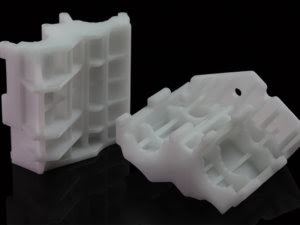New
material courses of action aren't constantly about finding another material or
modifying the compound synthesis of a material to make it printable as past
models show. Here and there another method for utilizing existing materials can
give something unprecedented. This was the situation with different material
structures that contained materials organized so that they produce energizing
outcomes.
A
joined task among MIT and ETH Zurich acts like one model. Analysts made a
material with the most elevated firmness to weight proportion conceivable by
revamping the development of plastics on the nano-scale. This brought about a
material that was inflexible, while likewise offsetting this solidness with a generally
low weight. Basically, they had built up the stiffest material conceivable,
being genuinely near the hypothetical furthest reaches that physical science
permits by just tweaking the ways its microstructure is orchestrated.
This
kind of firmness to weight proportion is vital for high-quality therapeutic
inserts, planes and race cars. As referenced already, the fundamental thought
isn't as much in the material being used for what it's worth in the development
on the small scale. With the utilization of multifaceted examples of brackets,
supports and curves, the specialists augmented quality and continuance.
Essentially,
the University of Sheffield and Imperial College scientists were looking into
the utilization of novel microstructures in prints to improve sturdiness,
planning to make better approaches for printing composites. Their work in the
utilization of crystallographic metamaterials utilized PC nuclear demonstrating
to make these at no other time seen structures. These precious stone structures,
as they depicted them, bring about prints that turn out without grain limits,
being ceaseless and whole. This gives the end print better harm resistance,
quality, and durability.
Such
materials have intermittent game plans of hubs and swaggers, making them
lightweight while displaying a mix of properties that don't happen in ordinary
solids. By utilizing the solidifying components found in crystalline materials
to create materials that are vigorous and harm tolerant, they made printable
materials that subtractive assembling couldn't in any way, shape or form
oversee.
A
comparable thought pervades the field of 4D printing, where microstructures are
so gently adjusted they transform normal materials into robots or practical
things with different courses of action. 3D printing frequently gives these
capacities to tinker the minutest subtleties till they fill a structured need
and empowers the production of new structures inside the universe of assembling
and research.





